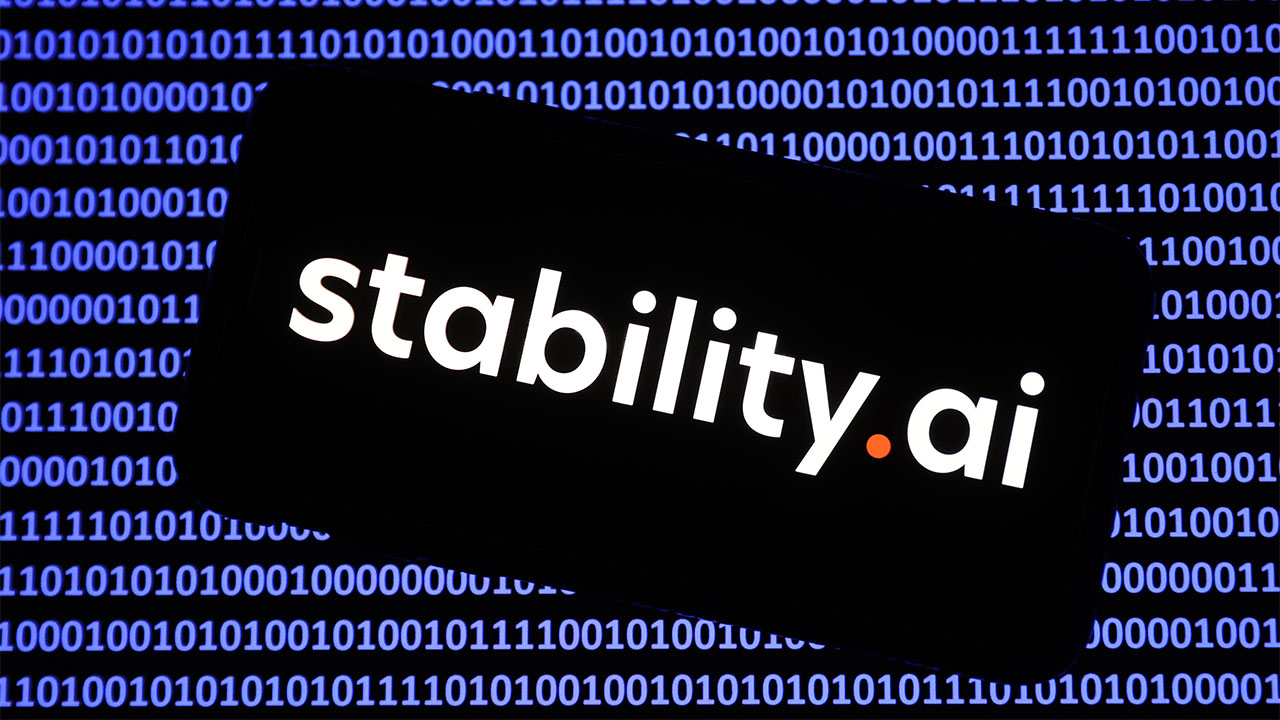Introduction
When it comes to banking, there are many acronyms and terms that can be confusing for individuals who are not well-versed in the industry. One such acronym is DFI, which stands for Development Financial Institution. DFIs play a vital role in the banking sector, but their functions and significance are often misunderstood.
A Development Financial Institution (DFI) is a specialized financial institution that focuses on providing long-term finance for development-oriented projects. Unlike commercial banks that primarily cater to personal and business banking needs, DFIs are specifically designed to support economic growth and development initiatives in a country.
DFIs are typically created and operated by governments or multilateral organizations, with the aim of channeling funds to sectors such as infrastructure, agriculture, housing, small and medium-sized enterprises (SMEs), and other areas that are essential for economic progress. These institutions play a crucial role in bridging the gap between private investors and development projects, thereby facilitating economic transformation and social progress.
DFIs have a unique mandate that sets them apart from traditional commercial banks. While commercial banks focus on profit generation and shareholder returns, DFIs prioritize developmental objectives. This means that DFIs may be willing to take on higher levels of risk and provide financial support to projects that may not be attractive to commercial banks due to their long gestation periods or perceived higher risks.
The primary goal of a DFI is to contribute to sustainable economic development by financing projects that have the potential to generate social and economic benefits. These can include funding for renewable energy projects, affordable housing initiatives, agribusiness enterprises, and small-scale infrastructure development. By providing targeted financing for such projects, DFIs play a crucial role in stimulating economic growth, creating employment opportunities, and addressing societal challenges.
DFIs also play a critical role in supporting the development of local financial markets. By offering long-term financing and technical expertise, DFIs help build the capacity of local financial institutions and encourage the flow of capital into sectors that are considered high-priority for national development. This promotes financial inclusion and helps to reduce the reliance on external sources of funding.
Overall, DFIs serve as important catalysts for economic transformation and development. Through their unique mandate and focus on sustainable growth, DFIs contribute to the achievement of national development goals and the improvement of living standards for communities around the world.
Definition of DFI
A Development Financial Institution (DFI) is a specialized financial institution that plays a crucial role in the economic development of a country. DFIs are established with the objective of providing long-term financing and support to developmental projects that contribute to the growth and progress of a nation.
DFIs are typically created and operated by governments or multilateral organizations, with a focus on providing financial resources for sectors such as infrastructure, agriculture, healthcare, renewable energy, and small and medium-sized enterprises (SMEs). These institutions are designed to address market failures and fill the financing gaps that exist for projects with high developmental impact.
One distinguishing characteristic of DFIs is their long-term outlook. Unlike commercial banks that often provide short-term loans, DFIs offer extended repayment periods to borrowers, allowing for the successful implementation of projects that require substantial time for completion and revenue generation.
DFIs also possess industry-specific expertise and knowledge, enabling them to assess the feasibility and viability of developmental projects. This expertise allows DFIs to provide not only financial support but also technical assistance and guidance throughout the project lifecycle.
Additionally, DFIs have a unique risk appetite. They are willing to take on higher levels of risk associated with developmental projects that may not meet the stringent requirements of traditional commercial banks. This risk tolerance is driven by the developmental goals of DFIs, which prioritize societal impact over short-term financial returns.
DFIs function as intermediaries between capital providers, such as governments, international financial institutions, and private investors, and project proponents who require funding. Their role is to mobilize resources and allocate them to projects that align with their developmental objectives.
Overall, DFIs play a vital role in promoting sustainable economic growth and development. With their long-term outlook, specialized expertise, and risk appetite, DFIs bridge the financing gap for high-impact projects that have the potential to create positive social and economic change.
Role of DFI in Banking
Development Financial Institutions (DFIs) play a pivotal role in the banking sector by fulfilling specific functions that are essential for economic development. Their unique role sets them apart from traditional commercial banks and contributes significantly to fostering sustainable growth in a country.
One of the primary roles of DFIs is to provide long-term financing for developmental projects. Unlike commercial banks, which are often focused on short-term profitability, DFIs focus on supporting projects that have a significant developmental impact. These projects can include infrastructure development, affordable housing initiatives, renewable energy projects, and SME financing.
DFIs also play an important role in addressing the financing gap that exists in the market. Many developmental projects require substantial financial resources that may not be readily available through traditional commercial banking channels. DFIs bridge this gap by providing patient and long-term capital, allowing these projects to move forward and contribute to economic growth.
In addition to financing, DFIs offer technical assistance and guidance to project proponents. This support is crucial in ensuring the successful implementation and management of developmental projects. DFIs leverage their industry-specific expertise to conduct due diligence, assess the feasibility of projects, and provide advice on project implementation and risk mitigation.
Another vital role of DFIs is to promote financial inclusion and support underserved segments of the population. Commercial banks may be reluctant to provide financing to individuals or businesses that lack sufficient collateral or credit history. DFIs, on the other hand, are more inclined to support these underserved segments by providing innovative financing solutions and tailored financial products.
DFIs also contribute to the stability and resilience of the banking sector. By diversifying the financial landscape, DFIs reduce the concentration of risk associated with commercial banks and promote a more balanced financial ecosystem. This diversification helps protect the economy from systemic risks and contributes to the overall stability of the banking system.
Additionally, DFIs often collaborate with other financial institutions, both locally and internationally, to mobilize resources and share best practices. This collaboration enhances the effectiveness and impact of DFIs in delivering their developmental goals and positively influencing the banking sector.
In summary, DFIs have a vital role in the banking sector. Their functions include providing long-term financing for developmental projects, offering technical assistance, promoting financial inclusion, contributing to sector stability, and fostering collaboration within the financial industry. By fulfilling these roles, DFIs significantly contribute to sustainable economic development and ensure the well-being of the communities they serve.
Types of DFIs
Development Financial Institutions (DFIs) come in various forms, each with its own unique characteristics and objectives. The types of DFIs can vary from country to country, depending on the specific needs and priorities of the region. Here are some common types of DFIs:
- National DFIs: These DFIs are established and operated at the national level and are typically owned or controlled by the government. They play a crucial role in promoting economic development within a country by providing long-term financing and support to key sectors.
- Multilateral DFIs: Multilateral DFIs are international financial institutions that provide funding and support to development projects across multiple countries. These institutions are owned and operated by a group of countries and are focused on fostering global economic development and poverty reduction.
- Regional DFIs: Regional DFIs operate at a regional level and provide financing and support to development projects within a specific geographic region. These institutions play a vital role in addressing the unique challenges and opportunities that exist within a regional context.
- Specialized DFIs: Specialized DFIs are created to cater to specific sectors or industries. They focus on providing targeted financing and support to sectors such as agriculture, housing, small and medium-sized enterprises (SMEs), and renewable energy. These DFIs have specialized knowledge and expertise in their respective sectors, enabling them to provide tailored financial solutions.
- Microfinance Institutions (MFIs): Although not traditionally considered DFIs, microfinance institutions provide financial services to underserved individuals and small businesses, typically in low-income communities. MFIs aim to promote financial inclusion and alleviate poverty by offering small loans, savings accounts, and other financial products.
While the specific types of DFIs may vary, their common goal is to support economic development and promote financial inclusion. Whether at the national, regional, or international level, DFIs play a critical role in providing long-term financing, technical expertise, and targeted support to projects and sectors that drive economic growth and improve livelihoods.
Regulation of DFIs
Development Financial Institutions (DFIs) operate within a regulatory framework that ensures their proper functioning, accountability, and compliance with relevant laws and regulations. The regulation of DFIs varies from country to country, but there are common elements that govern their operations. Here are some key aspects of the regulation of DFIs:
- Mandate and Legal Framework: DFIs are typically established under specific legislation or regulatory frameworks that define their objectives, governance structure, and operational guidelines. These legal frameworks ensure that DFIs operate within a defined scope and adhere to their developmental mandate.
- Prudential Regulation: DFIs, like traditional commercial banks, are subject to prudential regulations to ensure their financial stability and risk management. These regulations may include capital adequacy requirements, risk management guidelines, liquidity management guidelines, and reporting obligations.
- Governance and Oversight: DFIs are often subject to governance and oversight mechanisms to ensure accountability and transparency. This includes the appointment of independent boards of directors, internal controls, audits, and regular reporting requirements to regulatory authorities.
- Risk Management: DFIs are responsible for managing various types of risks, including credit risk, operational risk, market risk, and liquidity risk. Regulatory frameworks often mandate the implementation of robust risk management practices to ensure the stability and sustainability of DFIs.
- Capital Adequacy: Regulatory frameworks establish minimum capital requirements for DFIs to ensure they have sufficient capital buffers to absorb potential losses. Capital adequacy ratios are often monitored to assess the financial health and stability of DFIs.
- Social and Environmental Safeguards: Many DFIs have specific environmental and social policies in place to ensure that projects they finance adhere to sustainable and responsible practices. These policies may include guidelines on environmental impact assessments, labor rights, human rights, and community consultations to mitigate negative social and environmental impacts.
- Supervision and Regulation: Regulatory authorities play a crucial role in supervising and overseeing the operations of DFIs. They monitor compliance with regulations, conduct periodic inspections, and enforce regulatory requirements to safeguard the interests of stakeholders and the public.
The regulation of DFIs aims to strike a balance between their developmental objectives and the need for financial soundness. The regulatory frameworks ensure that DFIs operate in a responsible and sustainable manner, managing risks effectively while contributing to the economic development of their respective countries or regions.
Differences between DFIs and Commercial Banks
Development Financial Institutions (DFIs) and commercial banks are distinct entities within the banking sector, each serving different purposes and catering to different segments of the market. Here are some key differences between DFIs and commercial banks:
- Mandate: The primary difference between DFIs and commercial banks lies in their mandates. While commercial banks primarily focus on profit generation and shareholder returns, DFIs have a developmental mandate. DFIs are established to support economic development initiatives, fund projects with high developmental impact, and address market failures.
- Target Clients: Commercial banks primarily serve individuals, businesses, and corporations, providing a range of financial services such as deposit accounts, loans, and transactional banking. DFIs, on the other hand, often focus on underserved sectors or industries and provide long-term financing and support to projects that may be considered too risky or not commercially viable for commercial banks.
- Risk Appetite: DFIs typically have a higher risk appetite compared to commercial banks. They are willing to take on higher levels of risk associated with developmental projects, as their primary focus is on the long-term developmental impact rather than short-term profitability. Commercial banks, on the other hand, tend to prioritize risk management and profitability.
- Financial Products: Commercial banks offer a wide range of financial products and services, including savings accounts, checking accounts, loans, credit cards, and investment products. DFIs, on the other hand, may offer more specialized financial products targeted at specific sectors or developmental needs, such as project finance, equity investments, and technical assistance.
- Time Horizon: Commercial banks generally operate with a shorter time horizon, focusing on short-term profitability and meeting immediate financial needs of their clients. DFIs, however, have a longer time horizon and provide patient capital to projects with longer gestation periods, recognizing that the impact of these projects may take time to materialize.
- Ownership and Governance: While both DFIs and commercial banks can be privately or publicly owned, DFIs are often established and controlled by governments or multilateral organizations. DFIs may have specific governance structures that involve a mix of public and private stakeholders, reflecting their developmental objectives and the need for accountability.
- Profit vs. Development: The ultimate goal of commercial banks is to generate profits and maximize shareholder returns. In contrast, DFIs prioritize developmental objectives and societal impact. While DFIs aim to achieve financial sustainability, their primary focus is on fostering sustainable economic growth and providing support to projects that contribute to social and economic development.
These differences highlight the distinct roles and objectives of DFIs and commercial banks within the banking sector. While commercial banks play a crucial role in providing financial services to individuals and businesses, DFIs have a unique focus on supporting high-impact developmental projects, bridging financing gaps, and promoting sustainable economic growth.
Benefits of DFIs in Banking
Development Financial Institutions (DFIs) play a significant role in the banking sector, bringing a range of benefits that contribute to sustainable economic development. Here are some key benefits of DFIs:
- Promoting Economic Growth: DFIs are instrumental in promoting economic growth by providing long-term financing and support to developmental projects. By filling the financing gap for high-impact projects, DFIs stimulate economic activity, create employment opportunities, and contribute to overall economic prosperity.
- Fostering Financial Inclusion: DFIs prioritize reaching underserved segments of the population that may have limited access to financial services. By providing tailored financial products and services, DFIs promote financial inclusion and empower individuals and businesses to participate in the formal economy.
- Bridging Financing Gaps: DFIs are often willing to take on higher risks associated with developmental projects that may not meet the criteria of commercial banks. By bridging the financing gap for these projects, DFIs enable their realization, which would have otherwise been challenging to fund through traditional banking channels.
- Providing Technical Expertise: DFIs possess industry-specific expertise and knowledge, allowing them to provide technical assistance to project proponents. By offering guidance throughout the project lifecycle, DFIs enhance the chances of project success, ensuring efficient implementation and optimal utilization of resources.
- Supporting Sustainable Development: DFIs prioritize projects that have a positive environmental and social impact. By financing initiatives in sectors such as renewable energy, affordable housing, and sustainable agriculture, DFIs contribute to sustainable development goals, promote environmental stewardship, and enhance the quality of life for communities.
- Promoting Public-Private Partnerships: DFIs often play a pivotal role in facilitating public-private partnerships (PPPs) by leveraging their expertise and financial resources. These partnerships are crucial for implementing large-scale infrastructure projects, where the collaboration between the public and private sector is essential for successful project delivery.
- Encouraging Innovation and Entrepreneurship: DFIs provide financing and support to small and medium-sized enterprises (SMEs), which are important drivers of job creation and innovation. By fostering entrepreneurship and SME development, DFIs contribute to the development of a vibrant and diversified economy.
- Reducing Dependency on External Financing: DFIs reduce reliance on external sources of financing by mobilizing domestic and international resources for developmental projects. By promoting local financial market development and providing access to patient capital, DFIs help countries reduce their dependence on foreign aid and external debt.
These benefits highlight the value that DFIs bring to the banking sector and the broader economy. Through their focused and specialized approach, DFIs enhance economic growth, foster financial inclusion, support sustainable development, and promote innovation and entrepreneurship.
Challenges Faced by DFIs
While Development Financial Institutions (DFIs) play a crucial role in promoting economic development, they also face several challenges that can impact their effectiveness and sustainability. Here are some of the common challenges faced by DFIs:
- Funding Constraints: Securing adequate funding for DFIs can be a challenge, particularly in situations where governments may have competing priorities. Limited financial resources can restrict the ability of DFIs to meet the financing needs of developmental projects and hinder their impact.
- Risk Management: DFIs often work in challenging and high-risk environments, both at the project level and in the broader economic context. Managing risks associated with projects, such as political risks, market risks, and environmental risks, requires advanced risk assessment and mitigation strategies.
- Capacity Constraints: Building and maintaining the technical expertise required to assess complex and diverse projects can be a challenge for DFIs. This includes having skilled professionals who can evaluate the financial viability and developmental impact of projects and provide comprehensive technical assistance to borrowers.
- Coordination and Collaboration: DFIs operate within a complex ecosystem that includes governments, donors, international financial institutions, and other stakeholders. Collaborating and coordinating with these diverse entities can be challenging, particularly in ensuring alignment and avoiding duplication of efforts.
- Sustainability and Financial Viability: Balancing the need for financial sustainability with the developmental mandate is a constant challenge for DFIs. Striving for commercial viability while supporting projects with longer gestation periods and higher risk profiles requires careful decision-making and financial management.
- Regulatory Environment: The regulatory framework in which DFIs operate can impact their performance. Regulatory constraints, including capital requirements, prudential regulations, and reporting obligations, can impose additional burdens on DFIs and potentially limit their ability to fulfill their developmental objectives.
- Political Interference: DFIs may face political pressures and interference that can impact their independent decision-making and, in some cases, compromise their developmental focus. Maintaining organizational autonomy and ensuring a clear separation between the political and operational aspects of DFIs is crucial.
- Evaluating Developmental Impact: Measuring and evaluating the developmental impact of projects funded by DFIs can be challenging. Quantifying the socioeconomic benefits and ensuring accountability for the intended outcomes requires robust monitoring and evaluation frameworks.
Addressing these challenges requires a comprehensive approach that involves adequate funding, capacity building, strategic partnerships, effective risk management, and supportive regulatory frameworks. By addressing these challenges, DFIs can enhance their ability to deliver on their developmental mandate and contribute effectively to sustainable economic development.
Conclusion
Development Financial Institutions (DFIs) play a pivotal role in the banking sector by providing long-term financing and support to high-impact developmental projects. DFIs are distinct from commercial banks, as they have a specific developmental mandate and prioritize socioeconomic impact over short-term profitability. Through their specialized focus, DFIs contribute to sustainable economic growth, financial inclusion, and the achievement of national development goals.
DFIs bridge financing gaps and support underserved sectors, such as infrastructure, agriculture, renewable energy, and small and medium-sized enterprises (SMEs). Their willingness to take on higher levels of risk and their expertise in project assessment enable them to fund projects that may not meet the stringent requirements of commercial banks. By doing so, DFIs stimulate economic activity, create employment opportunities, and address market failures that hinder development.
DFIs also play a crucial role in promoting financial inclusion. By providing tailored financial products and services, DFIs empower individuals and businesses in underserved communities, allowing them to participate in the formal economy and improve their livelihoods.
Furthermore, DFIs contribute to sustainable development by financing projects that have positive environmental and social impacts. Through their support of initiatives in sectors like renewable energy, affordable housing, and sustainable agriculture, DFIs foster environmental stewardship and improve the quality of life for communities.
However, DFIs also face certain challenges, including funding constraints, risk management complexities, capacity limitations, and regulatory considerations. Overcoming these challenges requires strategic planning, effective coordination, and a commitment to financial viability and sustainability.
In conclusion, DFIs are key players in the banking sector, contributing to economic development, financial inclusion, and sustainable growth. Their unique developmental mandate, risk appetite, and focus on underserved segments make them vital drivers of positive change. By leveraging their financial resources, expertise, and collaborative partnerships, DFIs have the potential to transform societies, address developmental gaps, and create a more equitable and prosperous future.

























